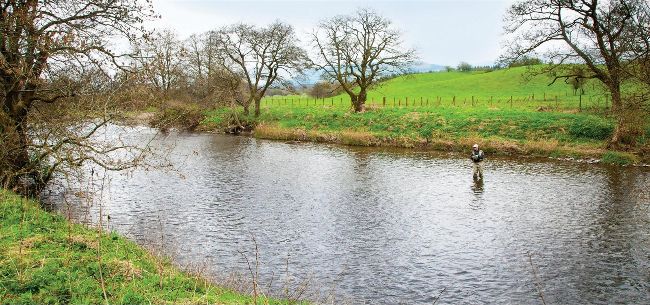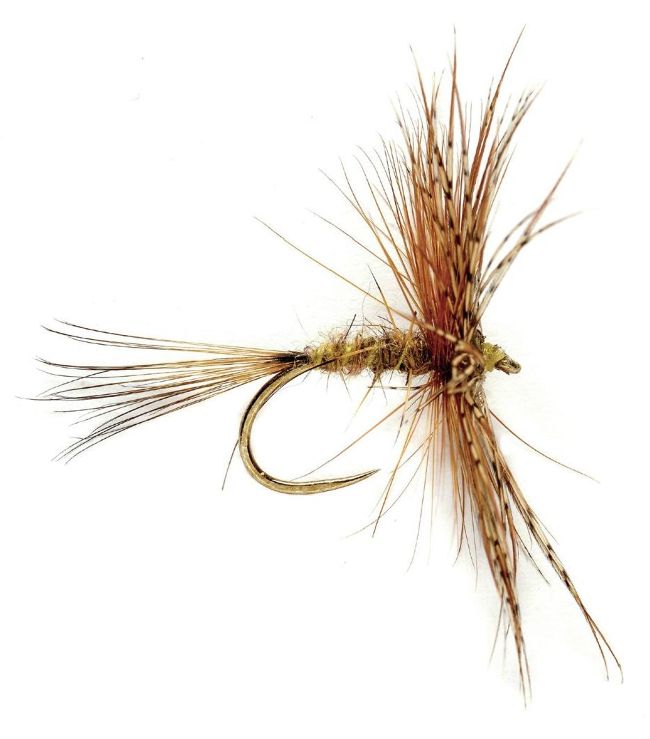THE RITES OF SPRING
Paul Procter offers wisdom, advice and heaps of encouragement as he prepares us for a bountiful new season among wild river trout

Green shoots and the first flowers among gaunt trees and flood debris
“A lot of blood is pumped through your neck – keep it warm”
THE DAWN OF A NEW TROUTseason brings with it many emotions, not least anticipation of that first outing so strong that it can tie a stomach in knots. We dream of bumper fly hatches that draw every trout in the river to the surface, and although reality may be different, whatever we face on that opening day, it is a time of optimism and renewal. Here are a few pointers that I hope will help you make the most of those exciting first weeks.

Try a Jingler to imitate emerging olives
1
O
N THE RISE OR ON ITS BONES?
To ensure your first outing isn’t a damp squib, carefully check the water heights on your chosen river system – there is no point turning up to a chocolate flood. River height information can be gleaned from the gov.uk (England), NRW (Wales), SEPA (Scotland), DFI (Northern Ireland), OPI (Ireland) and Fishpal websites. Alternatively, call the riverkeeper or the local tackle-shop.
A river often rises from the top down, so upper beats will clear quicker after a flood. However, there may be time to fish the lower beats before floodwater arrives. Also, consider tributaries, some of which may be more susceptible to colouring up than others, depending on the land through which they travel. Arable fields create run-off, so you may need to choose water upstream of crops. If it is frosty, the ground will hold water back but release it again when warmth comes, sometimes causing rivers to rise in the afternoon.
In case you are washed off, perhaps by localised weather, research the fishing availability of more than one river, so that you have a back-up plan.
2 GRIME, KINKS AND LEAKS
Hopefully, you put your tackle away for winter in a dry and clean condition, but you may still find unwanted surprises in spring. Check rod rings for signs of wear and ensure they are free of dirt. Give your reel the once over, applying a little oil or grease to the working parts, mainly the spindle and handle. Rinse your fly-line in lukewarm water and washing-up liquid and inspect for signs of cracking. Any severely worn line should be replaced because moisture is likely to penetrate the core via capillary action, which causes the line to become swamped and sometimes mouldy. With the fly-line off the reel, make sure the backing is lying evenly and not ‘digging in’. Few river trout will take you to the backing, but if they do and the backing is not free to uncoil, you may lose the fish of a lifetime.